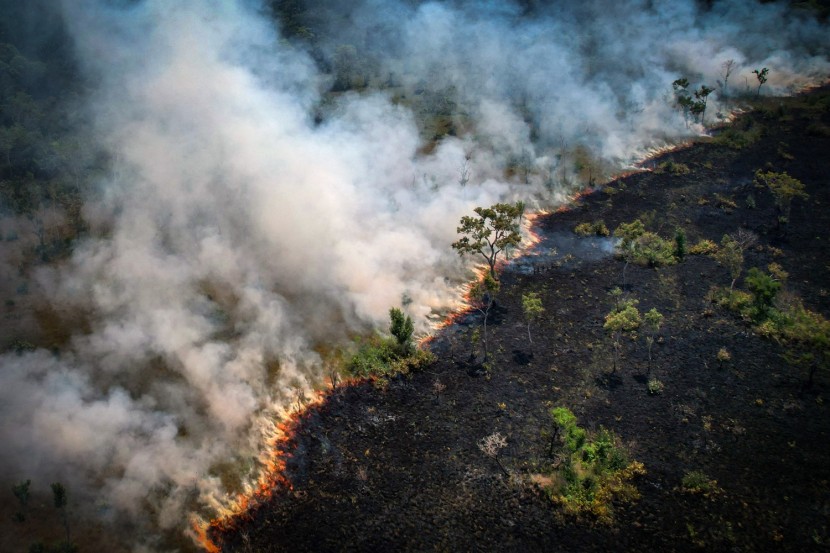The Amazon Rainforest, a majestic natural wonder spanning approximately 2.6 million square miles across South America, is facing an unprecedented crisis. Recent research, published in the journal Nature, suggests that the Amazon is hurtling towards a tipping point of irreversible collapse as early as 2050.
The study, conducted by experts from the Federal University of Santa Catarina in Brazil and the University of Birmingham in the United Kingdom (UK), paints a dire picture of the forest's future if immediate action is not taken.

For over 65 million years, the Amazon Rainforest has been a resilient ecosystem, weathering natural fluctuations in climate.
However, human-induced stressors such as deforestation, climate change, and water stress have pushed the forest to its limits. The study indicates that up to half of the Amazon could be exposed to compounding disturbances, triggering widespread ecosystem collapse.
Bernardo Flores, the lead author of the study and a postdoctoral researcher at the Federal University of Santa Catarina, expressed surprise at the accelerated pace of forest decline, emphasizing the urgent need for intervention.
"We don't really know when we are going to reach it," said Flores. But, he said "We are approaching it faster than we thought."
The Amazon is already experiencing weakened resilience, with significant areas succumbing to land clearance and climate disruption. Once the tipping point is crossed, experts warn, the consequences will be catastrophic and irreversible.
"Compounding disturbances are increasingly common within the core of the Amazon," the lead author said in a summary. "If these disturbances act in synergy, we may observe unexpected ecosystem transitions in areas previously considered as resilient, such as the moist forests of the western and central Amazon."
The tipping point scenario is exacerbated by a combination of factors, including rising temperatures, extreme droughts, deforestation, and fires. These stressors not only threaten the Amazon's biodiversity but also its vital role in regulating global climate patterns.
"We already knew about all these factors at play, but once we connected the pieces of this complex puzzle, the image was alarming," Flores told CNN.
As the world's largest tropical rainforest, the Amazon acts as a crucial carbon sink, absorbing vast amounts of carbon dioxide from the atmosphere. However, rampant deforestation and forest degradation have turned parts of the Amazon into carbon emitters, exacerbating the climate crisis.
Moreover, the Amazon's intricate water cycle, responsible for sustaining regional and global rainfall patterns, is under threat.
The forest's ability to release moisture into the atmosphere, known as the "flying rivers," sustains ecosystems beyond its borders, including the Pantanal wetlands and the La Plata River basin. As the Amazon deteriorates, these vital water supplies face disruption.
Read Also : Amazon Rainforest Ravaged: Over 800 Million Trees Cut Down in 6 Years to Satisfy Beef Industry Demand
Recommendations for Amazon Conservation
The study projected that between 10% to 47% of Amazonian forests could face compounding disturbances by 2050, potentially leading to unforeseen ecosystem-wide transitions with detrimental repercussions for regional climate patterns.
The study recommends establishing a protective boundary, including a buffer zone, to restrict deforestation to 10% of the Amazon region and maintain global warming within 1.5°C above pre-industrial levels.
Yet, current findings reveal that this threshold has been surpassed, with 15% of the Amazon already cleared and an additional 17% degraded due to human activities such as logging and fires. Moreover, extended periods of drought over the past decade have further compromised 38% of the Amazon, intensifying the urgency of preserving the forest's stability.
The study emphasized that governments must not only cease carbon emissions and deforestation but also undertake efforts to restore a minimum of 5% of the rainforest.
Dr. Flores cautioned that surpassing these thresholds could lead to the collapse or transition of the forest into alternative ecosystems, highlighting the existence of a critical tipping point shaped by the interaction of various stressors.
In addition to halting deforestation and advocating for forest restoration, the study suggests expanding protected areas and Indigenous territories.
Flores underscored the necessity of global collaboration to reduce greenhouse gas emissions and emphasized the significance of cooperation among Amazonian countries to support forest restoration efforts.
Related Article : Discovery of Ancient Society in Amazon Rainforest Wows Scientists








